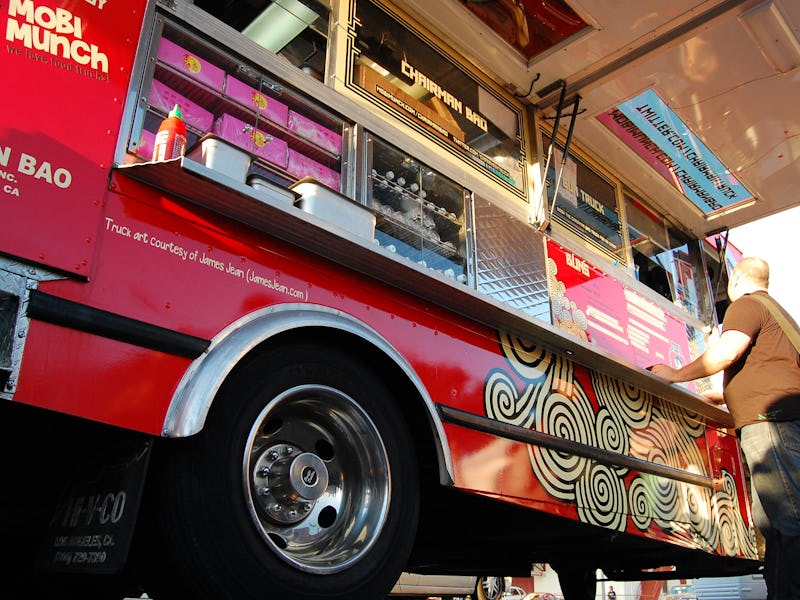UberHOP Could Save Food Trucks From Themselves
Excessive competition has hurt vendors but a new kind of foot traffic could salvage the sector.

As part of its ongoing mission to reduce car travel times while turning a healthy profit, Uber is jumpstarting a new program by the name of uberHOP. Described as a glorified minibus service, uberHOP is essentially five-person ride-sharing along select routes. While Uber intends for the program to monetize the failures of public transit, it could be a much needed game-changer for the street food industry.
While city dwellers have relied on food vendors since forever, the street meat industry has had its booms and busts. From about 2009 to 2012, the food vending industry became hip with the influx of the non-traditional food truck — tricked out post-roach coach vehicles that coordinated their movements via Twitter. Then, well, nothing. There’s been little growth in years, just increased competition.
“If uberHOP became really big, it could be great for mobile food vendors,” says Edward Song. “It may really play to their strengths of being mobile and agile.”
What makes the program particularly interesting to vendors is that it will bring people out to the sidewalk. If that means they can sell more pre-made food to waiting uberHOP passengers, great. If it means they can sell more meals to passengers before they request lifts, even better. Either way, street life is good vendors, particularly when it spreads pedestrians out, making it easier for them to stop and, well, graze.
Song is the founder of Korilla BBQ, a company that began as an extremely popular food truck and now also operates a brick and mortar restaurant. When asked about the possibility of an uberHOP food-vending disruption, he explained that, while vendors are dependent on the lunch crowd, the transportation program will create new flows of hungry traffic.
A Korilla BBQ food truck in Bedstuy, New York.
“I think this could present an opportunity for mobile vendors and newcomers because the way the mobile vending industry has settled down in New York — you don’t really see much mobility in a mobile business,” says Song.
Song adds the market has become supersaturated in the past few years, which in turn has created a series of issues for food vendors. The problem that could hypothetically be helped the most by a service like uberHOP is increased competition for areas that Song describes as “food hot spots” — spaces that have, over time and through forces like police regulation and restaurant complaints, become the best and safest areas to attract customers.
“Now there are clear ‘food hot spots’ to a point that if some people aren’t there by 3:30 a.m. that day, they are not going to be able to park there,” says Song. “I run into a lot of these young startups doing a food truck who say that is what they have to do and I just feel really bad for them. It’s gotten really crazy.”
For now, uberHOP is just operating in Seattle and Toronto — areas that both have public transit programs that seemingly can’t handle population growth. Inspired by the “casual carpools” of Washington, DC and San Francisco, uberHOP costs riders $5 each way and reportedly pays drivers $35 per hour. Uber declined to comment on this article.
Using the service is as simple as walking to a pre-determined pickup spot and riding along one of the available routes. Uber says they will create new routes based on demand.
Regardless of your thoughts on Uber’s mission to change the way we transport ourselves, we can probably agree that greater accessibility to delicious food is a cause we can all champion.